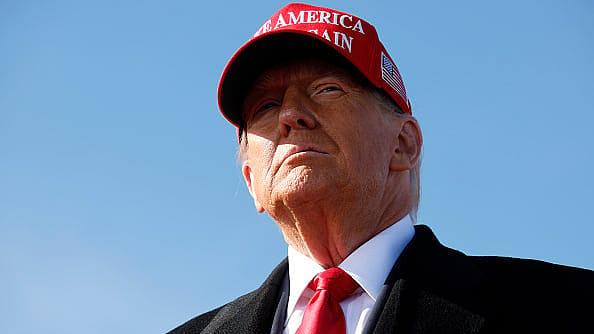No plan to extend pause on tariffs beyond July 9 deadline: Donald Trump
ADVERTISEMENT

U.S. President Donald Trump has indicated he does not intend to prolong the 90-day suspension on tariffs for most countries past July 9, the date marking the end of the negotiation window he established. He said his administration will inform countries that trade penalties will be enforced if agreements with the United States are not reached.
According to Trump, letters will begin being sent out “pretty soon" ahead of the upcoming deadline.
“We'll look at how a country treats us — are they good, are they not so good — some countries we don't care, we'll just send a high number out,” Trump said in an interview with Fox News Channel’s “Sunday Morning Futures”.
He explained that the letters would read: “Congratulations, we're allowing you to shop in the United States of America, you're going to pay a 25% tariff, or a 35% or a 50% or 10%.” At a White House press briefing on Friday, Trump downplayed the importance of the deadline, pointing out the difficulty in reaching separate agreements with every country. The administration had aimed to complete 90 trade agreements in 90 days.
January 2026
Netflix, which has been in India for a decade, has successfully struck a balance between high-class premium content and pricing that attracts a range of customers. Find out how the U.S. streaming giant evolved in India, plus an exclusive interview with CEO Ted Sarandos. Also read about the Best Investments for 2026, and how rising growth and easing inflation will come in handy for finance minister Nirmala Sitharaman as she prepares Budget 2026.
Talks are still ongoing, but as he noted in the interview, “there's 200 countries, you can't talk to all of them.”
Last week, the White House indicated that the Trump administration could extend a July deadline for re-imposing reciprocal tariffs on imports from other countries. White House Press Secretary Karoline Leavitt told reporters that these deadlines are “not critical” and could be extended, though the final decision lies with the President.
Leavitt added that if any country fails to reach a trade deal with the United States by then, President Trump may step in to propose an agreement himself. In such cases, he could set tariff rates he considers fair and beneficial to both the U.S. economy and American workers. “The President can choose a reciprocal tariff rate that he believes is in the best interest of the United States and its workers,” she said.
On Friday, US President Trump has said that a "very big deal" with India is likely to be signed soon. "Everybody wants to make a deal and be part of it. We just signed with China. We have one coming up—maybe with India. A very big one, where we are going to open up India. In the China deal, we are trying to open up China," Trump said last week.
The U.S. is the single largest export destination for Indian goods.
Trump had unveiled a broad set of tariffs on April 2, marking the most significant proposed tariff hike since the 1930s. As part of the "reciprocal tariff" plan, Indian exports to the U.S. were hit with an added 26% tariff. However, on April 9, the U.S. administration approved a 90-day delay in enforcing most of the tariffs, temporarily shifting back to a uniform 10% rate for nearly all affected countries.
The imposition of reciprocal tariffs by the US, particularly a 26% tariff on Indian imports effective April 2025, has injected uncertainty into India’s export outlook, but a successful US-India trade agreement could flip current headwinds into tailwinds.
